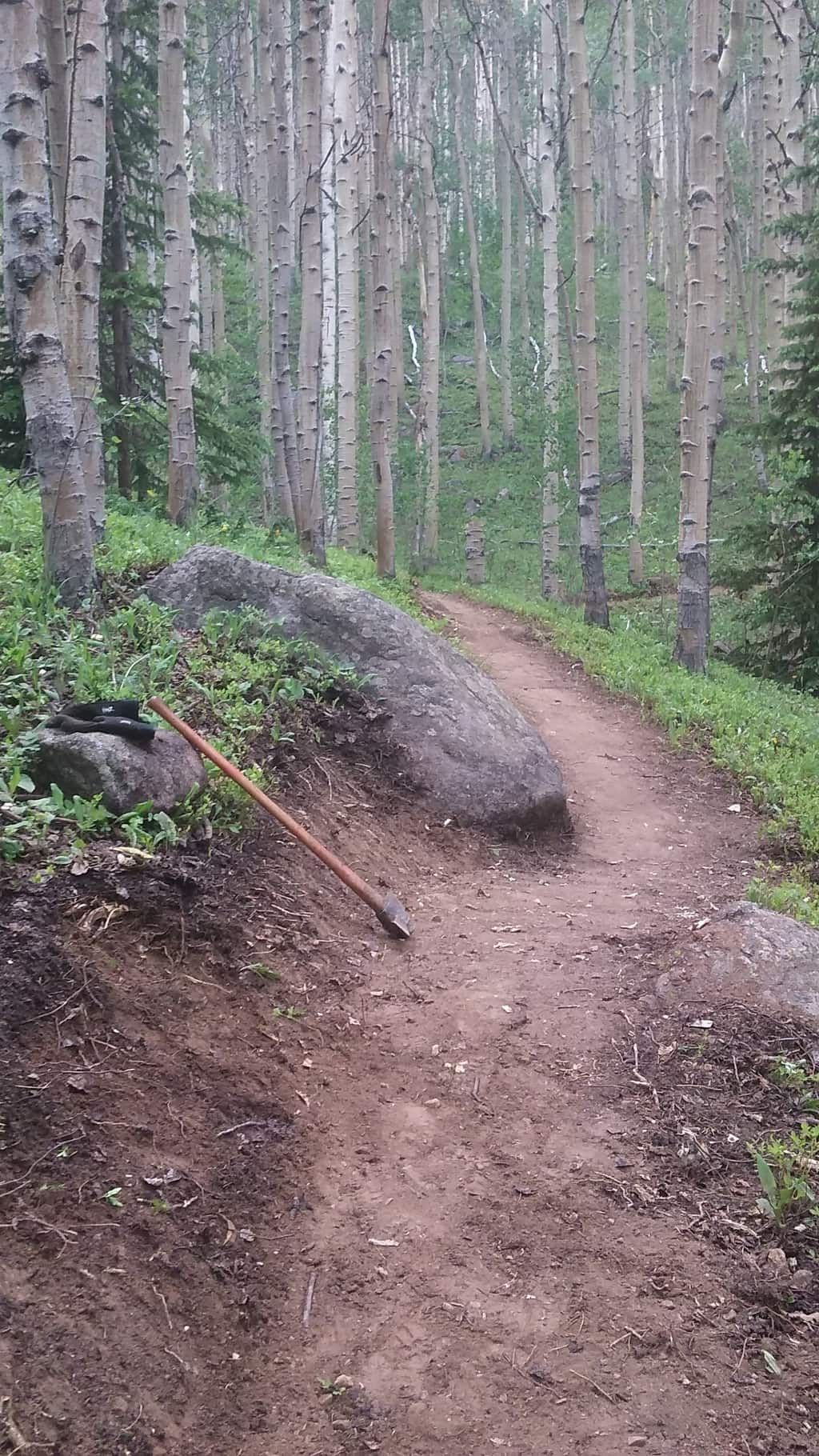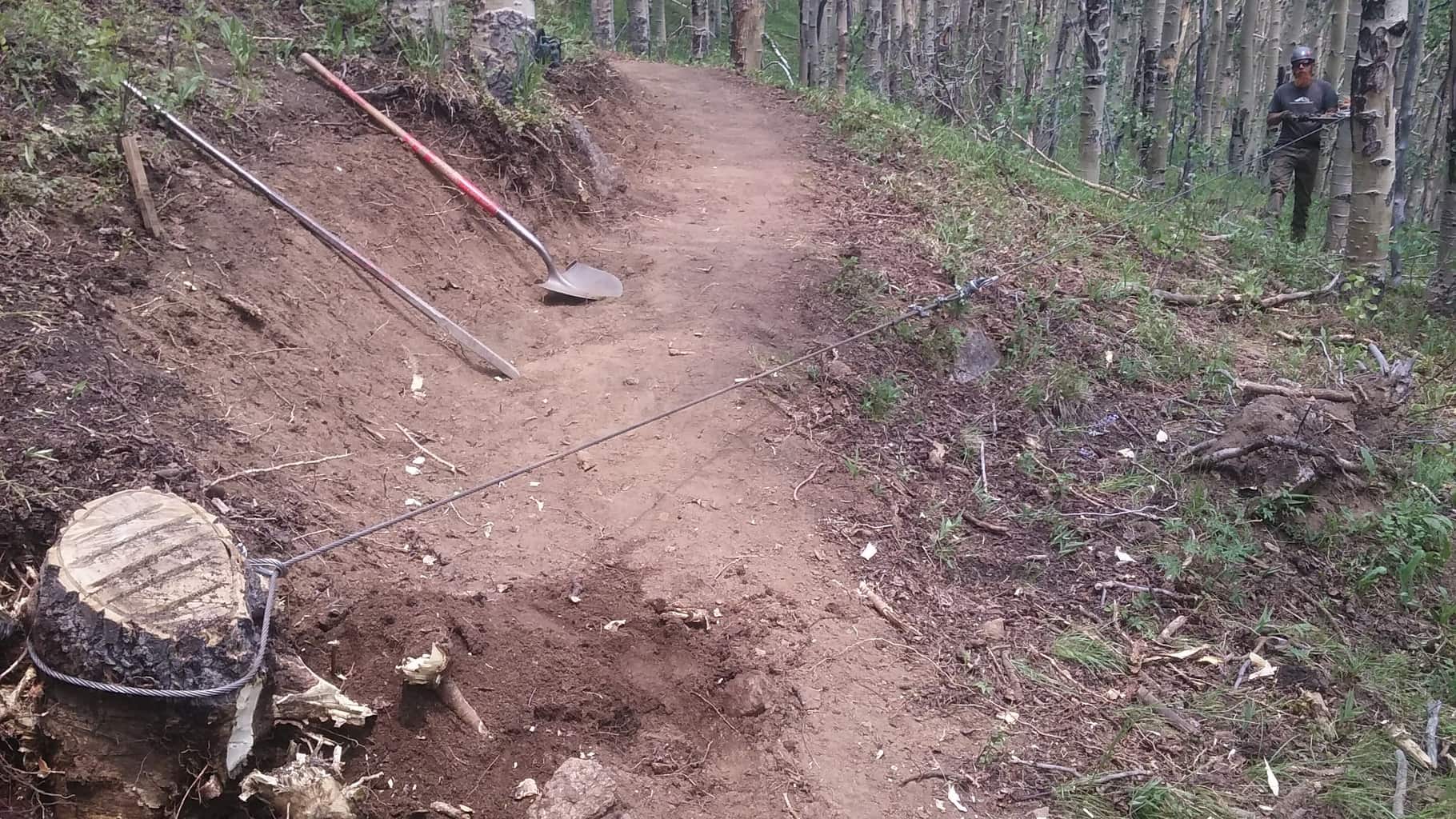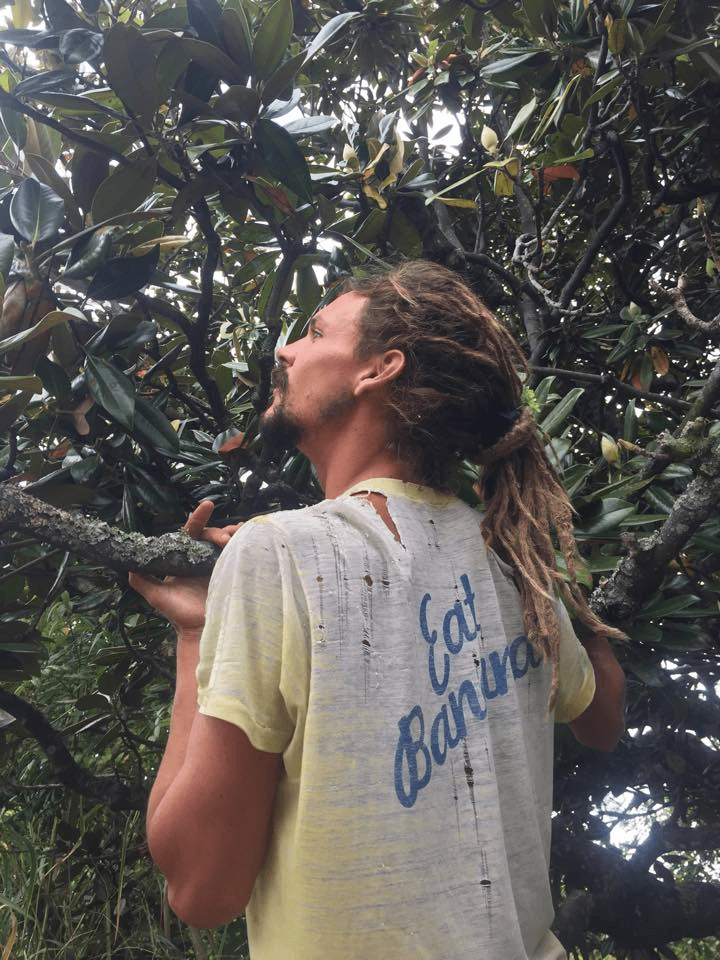
I’ll have to admit, when brainstorming a topic for a blog post this early in the season, I was a bit stumped. Then the lightbulb turned on, and I thought, “stumped! That’s it, how relevant!”
So over the last week, a few of us on the Mt. Elbert crew have been pulling out stumps, stump by stump. This probably isn’t a task that many folks think about while hiking these trails, but one that we don’t overlook. The stump removal process is just one of many of the diverse number of tasks going into this first year of construction on the new South Elbert trail that CFI has the pleasure to be implementing.


While in the alpine (above treeline), there are of course no stumps. This is typically where CFI performs most of our work. However, many of Colorado’s 14er trails start well below this in the subalpine or montane forests. In the case of the new South Elbert trail reroute, the lower section gently weaves through a breathtaking aspen grove, then mixed conifer forest, before patiently winding through the krumholtz on its way to the alpine. It’s in this aspen grove that we have been coming across these stumps, a lot of them. Before the stumps, came trees. We felled these trees of course to get our stumps.


We have been fortunate enough to have the help of a grip hoist to assist us in pulling out stumps. While our grip hoist has the capability of pulling 2,000 pounds of weight, this isn’t typically strong enough to pull out most of these stumps by itself. The rhizomatous root systems of aspens connecting each other (an entire aspen grove can share the same root system, meaning an entire grove can be one organism!) allow for a lot of lateral root structure. So before attempting to remove a stump with our grip hoist and rigging equipment, we have to dig out at least part of the stump to chop out some of the immensely strong roots branching outwards (think octopus). This is also to not buckle up more soil than absolutely necessary, our goal is to create as small as a stump hole as possible, thus impacting as little terrain and vegetation as possible. All stump holes are filled in with mineral dirt (harvested nearby from cutting new tread) and all evidence disappears under the new trail.






